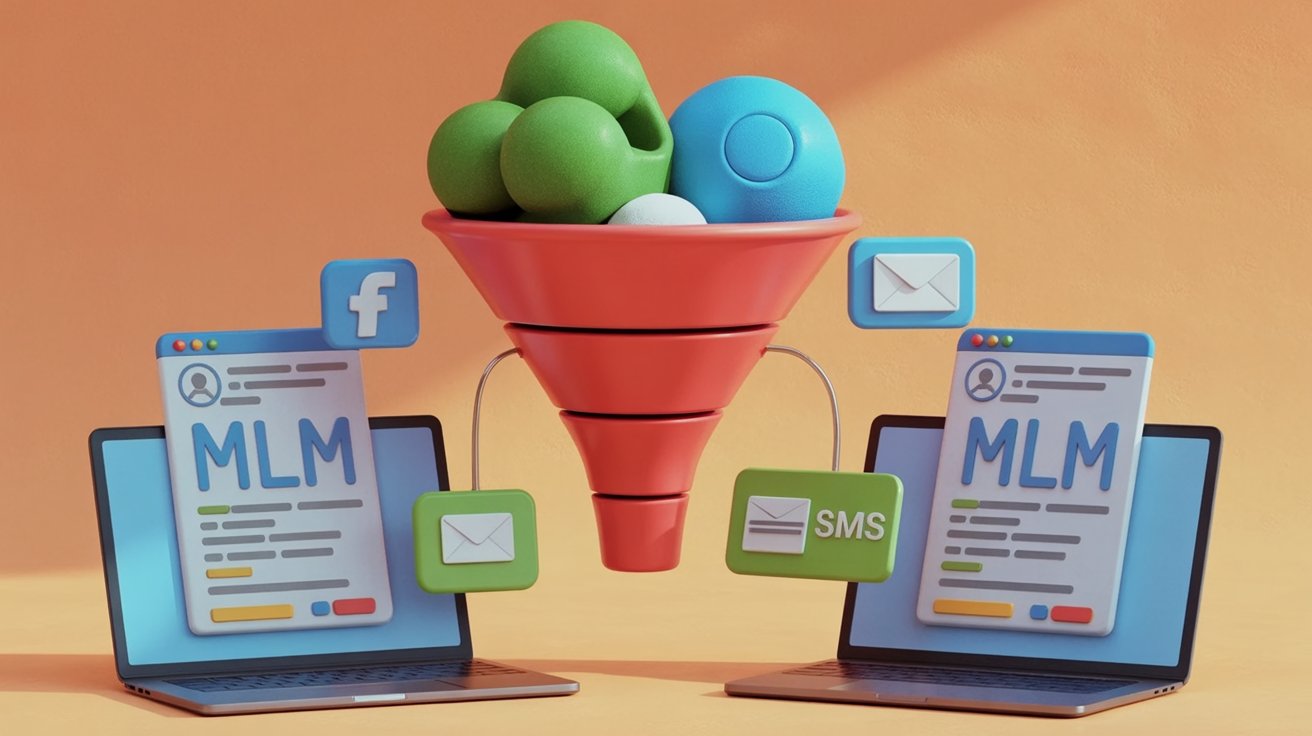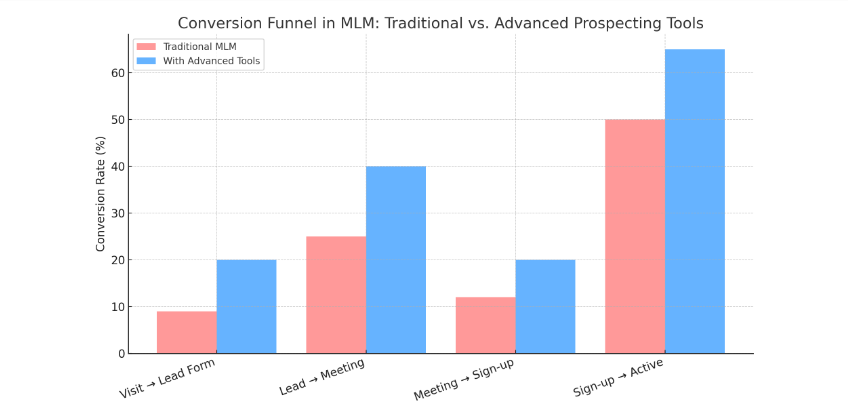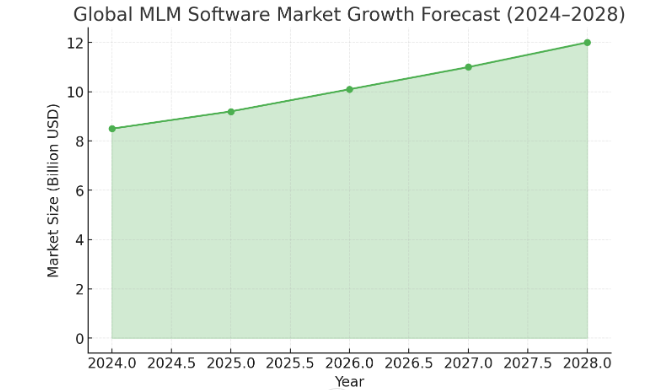

In today’s rapidly evolving digital marketplace, Multi-Level Marketing (MLM) software is no longer limited to genealogy trees or commission tracking.
A growing number of network marketing companies are leveraging lead and prospecting tools to fuel recruitment and sales. With increased competition
and digitally savvy prospects, distributors must use advanced tools like replicated websites, funnel pages, lead capture forms, and automated follow-up
sequences to stand out.
According to Global MLM Software Market Report (2024), the MLM software market is projected to grow at a CAGR of 8.2% through 2028, driven largely
by the demand for automation, digital lead nurturing, and AI-driven personalization (Sharma, 2024). This highlights the crucial role prospecting tools play
in both distributor success and company growth.
Replicated websites have long been a backbone of MLM companies, providing every distributor with a personalized web portal
that carries the company’s branding but includes unique affiliate tracking codes.
Modern MLM software platforms are going beyond static pages. They now integrate sales funnels, mimicking strategies used by
mainstream digital marketers. These funnel pages are structured to guide prospects step-by-step: awareness → interest → decision → action.
📊 Market Insight:
A 2023 report by Direct Selling News found that 67% of MLM companies implementing funnel-based prospecting
saw a 30% increase in lead-to-enrollment conversion rates compared to static websites.
Even the best website or funnel fails if it doesn’t capture contact details. Lead capture forms embedded in replicated websites
are critical to collecting emails, phone numbers, and social media handles.
Once captured, the real magic lies in automated follow-up sequences. These include:
📊 Benchmark:
Companies using automated follow-up sequences report 47% higher prospect engagement and 34% higher distributor retention
(Global Network Marketing Trends Survey, 2024).
Conversion Funnel Data in MLM (2024 Averages)
| Funnel Stage | Conversion Rate (%) | With Advanced Tools (%) |
|---|---|---|
| Website Visit → Lead Form | 8–10% | 18–22% |
| Lead → Meeting Attendance | 25% | 40% |
| Meeting → Sign-up | 12% | 20% |
| Sign-up → Active Distributor | 50% | 65% |
(Source: Global MLM Technology Benchmark Report, 2024)
This data shows that integrating lead capture automation and optimized funnels doubles conversion efficiency.

📈 Visualization:
Conversion Funnel Comparison – showing how advanced MLM prospecting tools nearly double efficiency at each stage compared to traditional approaches.
Looking ahead, several disruptive trends are shaping MLM prospecting:
By 2028, it’s projected that over 80% of MLM lead generation will be AI-assisted (MarketsandMarkets, 2024).

📈 Visualization:
Global MLM Software Market Growth Forecast (2024–2028) – highlighting the steady rise in market value, expected to reach
$12B by 2028.
Q1. What are lead and prospecting tools in MLM software?
Lead and prospecting tools are digital features that help MLM distributors attract, capture, and nurture prospects. Examples include replicated websites, funnel pages, lead capture forms, and automated follow-up systems that maximize conversions.
Q2. How do replicated websites benefit MLM distributors?
They provide each distributor with a personalized website that reflects company branding while ensuring affiliate tracking. This makes it easier to scale recruitment and ensures compliance across the network.
Q3. What is the difference between funnel pages and traditional MLM websites?
Funnel pages are optimized for conversions, guiding prospects through a structured journey with clear calls-to-action. Traditional websites are more informational, while funnels focus on turning visitors into leads and recruits.
Q4. Why are lead capture forms important in MLM?
Forms allow distributors to collect essential contact details. This enables proper segmentation, regulatory compliance, and ensures follow-up opportunities aren’t lost.
Q5. How do automated follow-up sequences improve MLM conversions?
Automation through emails, SMS, and chatbots keeps prospects engaged and nurtured over time. Studies show that MLM companies using automation see almost 50% more engagement compared to manual efforts.
Q6. What industry trends are shaping MLM lead generation?
The biggest trends include AI-driven personalization, mobile-friendly funnels, short-form video content, predictive lead scoring, and integrated multi-channel outreach. These technologies are transforming how distributors find and convert prospects.
Lead and prospecting tools in MLM software are no longer optional — they are the engine driving distributor success.
Replicated websites and funnel pages ensure consistent branding and optimized conversion journeys, while lead capture forms and automated follow-ups guarantee that no opportunity is wasted.
With the surge of AI-driven personalization, predictive analytics, and multi-channel automation, MLM companies that adopt these tools are not only seeing higher recruitment and sales but also building stronger, longer-lasting relationships with prospects.
As network marketing moves further into the digital age, the companies that thrive will be those that treat prospecting not as a numbers game, but as a data-driven, automated, and personalized journey.
Read more @